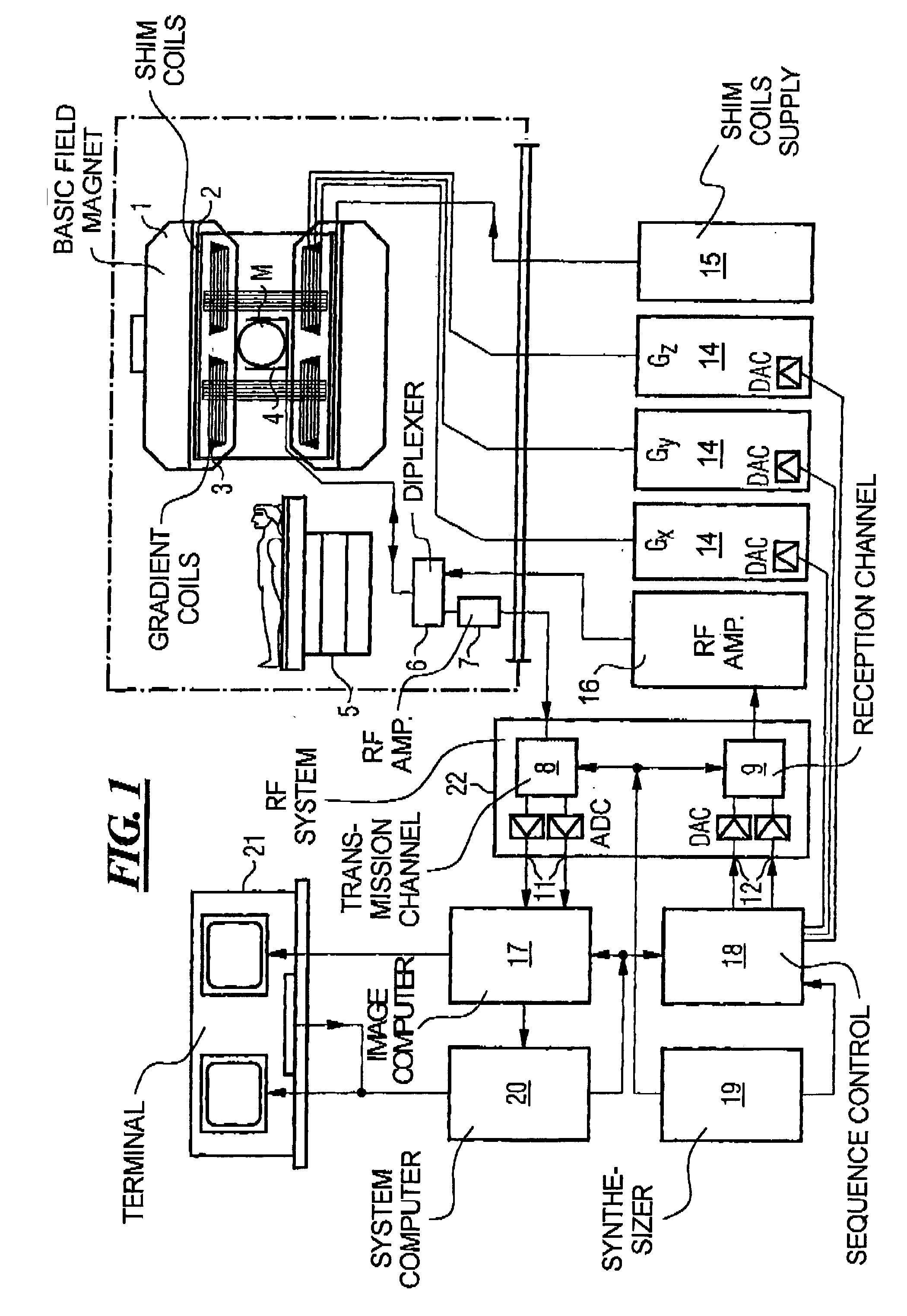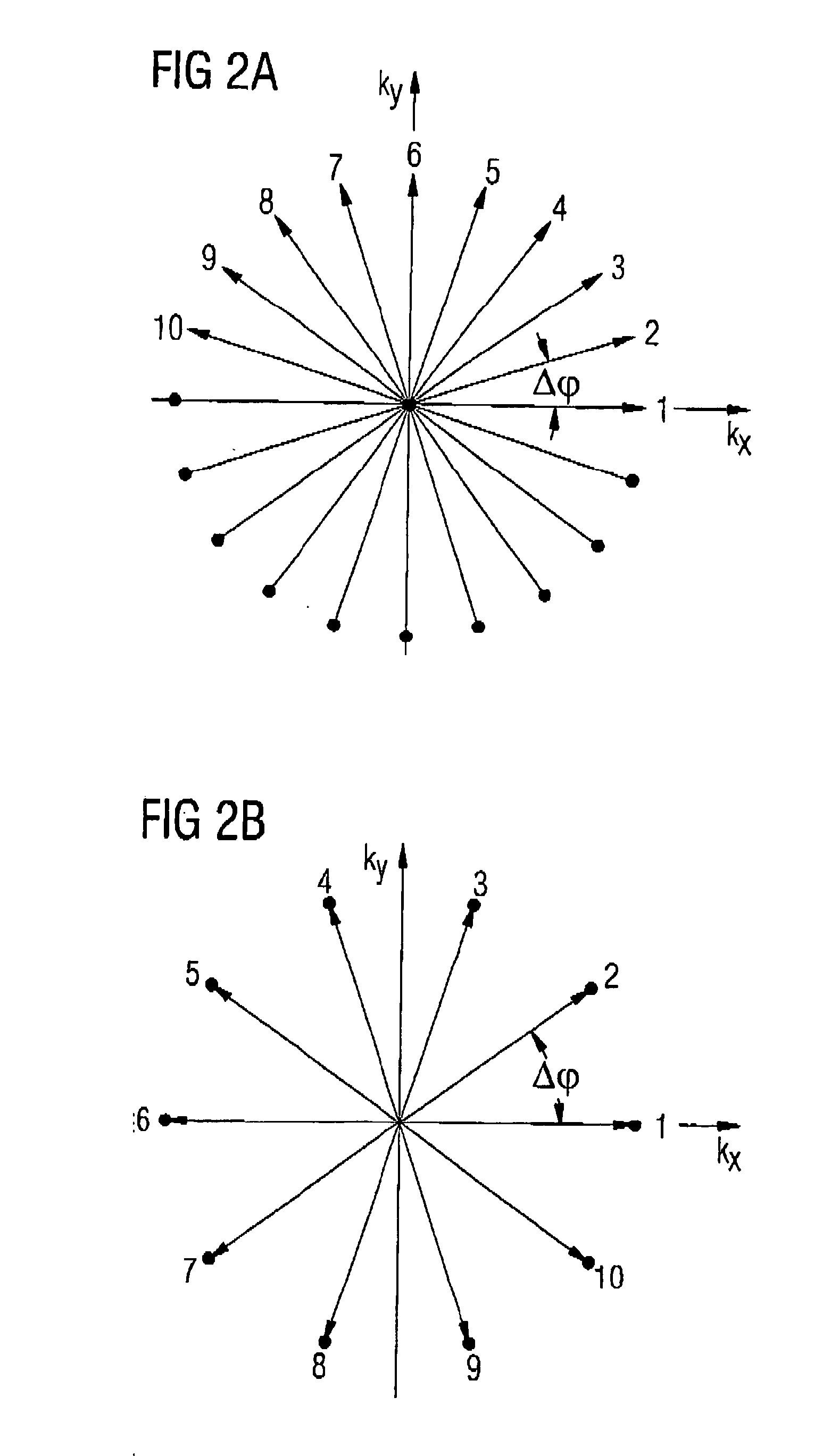Magnetic resonance imaging apparatus and method wherein streak artifacts are minimized in modular k-space scanning
- Summary
- Abstract
- Description
- Claims
- Application Information
AI Technical Summary
Benefits of technology
Problems solved by technology
Method used
Image
Examples
Embodiment Construction
FIG. 1 is a schematic representation of a magnetic resonance imaging device for the production of a magnetic resonance image of an object according to the present invention. The basic design of the magnetic resonance imaging device conforms to a conventional magnetic resonance imaging device with the exceptions noted below. A basic field magnet 1 generates a temporally constant strong magnetic field in order to polarize, i.e., align the nuclear spins in the examination range of the object, such as, for example, a part of a human body to be examined. The high degree of homogeneity in the basic magnetic field required for magnetic resonance sampling is defined in a spherical sampling volume M, into which the parts of the human body to be examined are introduced. To support the homogeneity requirements and especially to eliminate temporally invariable influences, so-called shims, which are made of a ferromagnetic material, are installed at suitable locations. Temporally variable influe...
PUM
 Login to View More
Login to View More Abstract
Description
Claims
Application Information
 Login to View More
Login to View More - R&D
- Intellectual Property
- Life Sciences
- Materials
- Tech Scout
- Unparalleled Data Quality
- Higher Quality Content
- 60% Fewer Hallucinations
Browse by: Latest US Patents, China's latest patents, Technical Efficacy Thesaurus, Application Domain, Technology Topic, Popular Technical Reports.
© 2025 PatSnap. All rights reserved.Legal|Privacy policy|Modern Slavery Act Transparency Statement|Sitemap|About US| Contact US: help@patsnap.com



